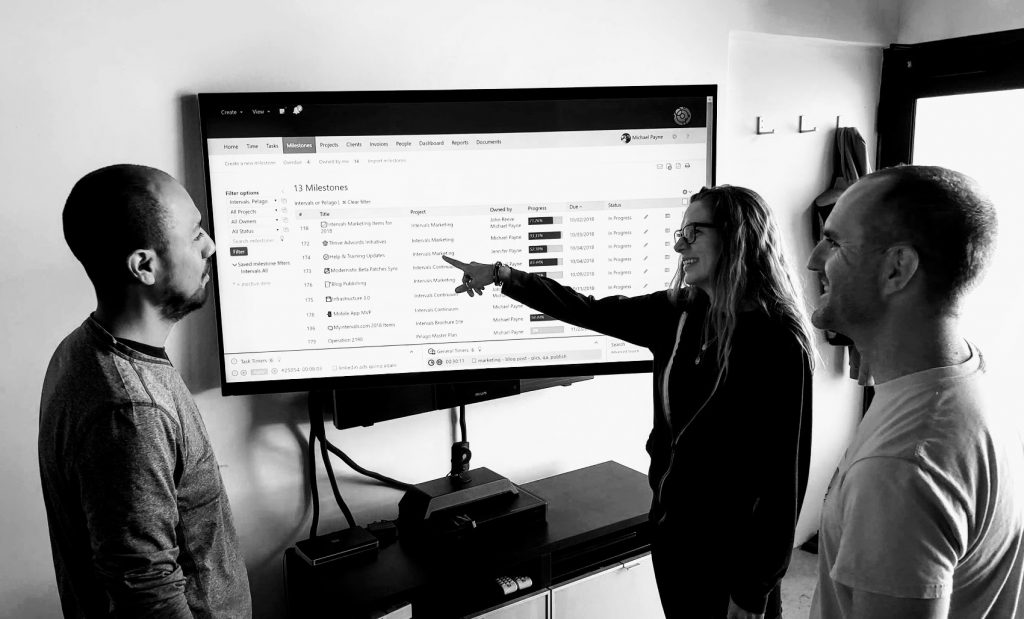Do you come out of your daily standups unclear about the team’s progress and their daily goals related to the stories they’re working on? Do you avoid asking for more details, afraid the team may think you’re micromanaging them? Fear not, you are not alone.
Unfortunately, I have experienced many ineffective standups on teams that are following the guidelines set forth by Agile & Scrum experts. The three standard questions, talking points that are supposed to be so powerful and keep us all in sync, have become a pet peeve of mine. People are going through the motions and following the rules, but are forgetting the intent of a standup. They are overly focused on answering the requisite three questions in under fifteen minutes.
We all know that standup is not supposed to be a “status report,” but that’s what it inherently becomes — an opportunity for people to prove they got something done yesterday, and assure the team today will be no different. Instead, the focus should be on understanding the work in progress, recently delivered work, and work coming down the line.
Common Standup Mistakes
Here are some of the most common mistakes a well-meaning team will make when adhering too strictly to the rules.
- Each person is recounting their recent work while looking at the one person on the team they are most concerned with convincing of their efforts — the boss, a product person, or a senior colleague.
- People get nervous and stumble through saying something, anything really, but not providing any helpful information.
- People look disengaged and aren’t paying attention to what others are saying, most likely because they’re more focused on what they want to say next without sounding nervous or repetitive.
- Conversations drag on and on, and you feel like you’ve been there forever. Discussions go on a tangent that involve only a few people, and waste everyone else’s time.
- The conversation bounces around from topic to topic and becomes fragmented because the focus is more on the work of each individual person rather than on the team’s efforts and goals.
These are just a few examples of behaviors I immediately notice when attending ineffective standups. They’re not hard to notice if you pay attention.
When Guidelines Don’t Work
I remember the one standup where it became very clear to me that these “guidelines” were not working. The team was literally standing up (like they’re supposed to) and arranged in a perfect circle. They went around the circle until everyone spoke. They followed the rules of standup and answered the three questions:
- What did I do yesterday?
- What am I going to do today?
- Do I have any impediments?
After the last person was done, I turned and looked at the TV screen that was displaying the stories the team was working on, and I had no idea what the team was going to try and accomplish that day, or how they were going to get any of it done.
I immediately asked, “Does anyone else know what everyone is doing today? I’m totally lost. We did not discuss the stories, and I don’t understand how we’re going to complete them. Does anyone else?” The response? “You’re right… we should talk about that.”
When we work in a world where we pair on tasks daily and work closely together on small teams, conversations should be driven by the stories, not the individuals.
Running an Effective Standup
Most teams have a list of priorities they are working from, whether it’s a task list, a sprint full of stories, or even line items in an Excel spreadsheet. There is only so much work that can be in progress, so the conversation should be quite focused and short.
Below, I’ve outlined some questions that can be used to run an effective standup. But before you get started, pull up your list of work that the team currently has in progress, in a place where everyone can see it. Then start with the first item on your list, and ask the following questions for each task or story:
- What’s the status on this?
Let the people who are working on it talk. - Are there any new discoveries you’ve made that would require us to change the scope or expected work for this story?
- Is there anything related to this story that is blocking you from completing your goals for today?
- Does anyone else have any input or questions on this story?
- Is everyone clear on the work being done today related to this story?
This is a bonus question that will help people understand the goals of the standup.
You can follow the above questions to get your standups headed in the right direction, but remember to change them up for your situation and ask whatever questions you need to obtain the goal of standup.
Additional Tips
- If the conversation starts to go deep, and discussions about how to implement something starts to happen, stop the team and suggest that the conversation be continued right after standup. People that want to be involved in that conversation can choose to do so, and those that don’t need to be there can leave once standup is over.
- Don’t be fooled into thinking that a standup HAS to be completed in under 15 minutes. If the conversation provides value and clears up confusion, but it goes on for 30 minutes, that is a success!
- Don’t hesitate to get clarification if you don’t follow what someone is saying. It’s supposed to be a group conversation, not a monologue.
It’s amazing how quickly standups can be turned around, and go from being non-effective, uncomfortable status reports, to actual real conversations about the work — just by refocusing the conversations on the stories.
Try it for yourself and tell me about your experiences.
